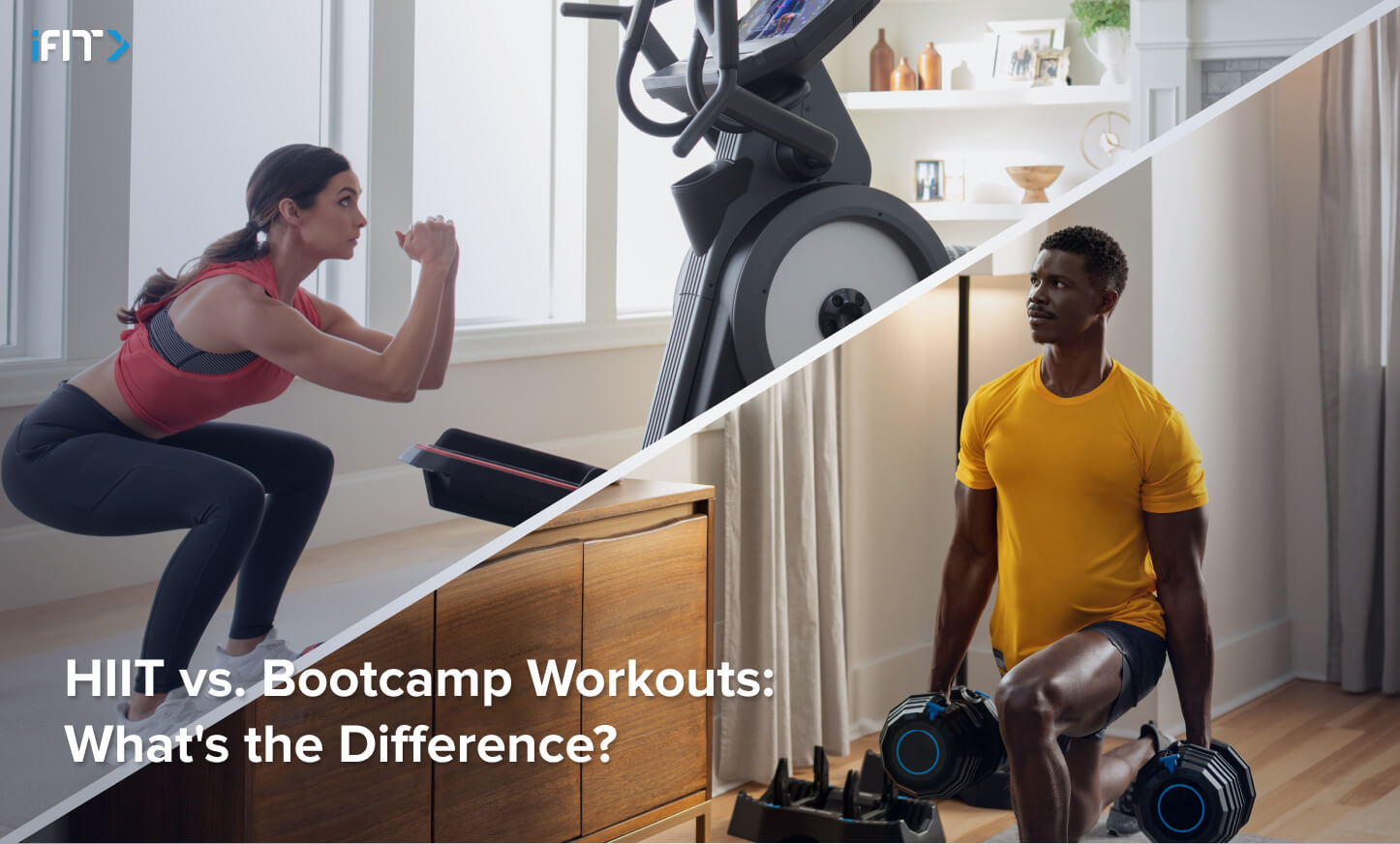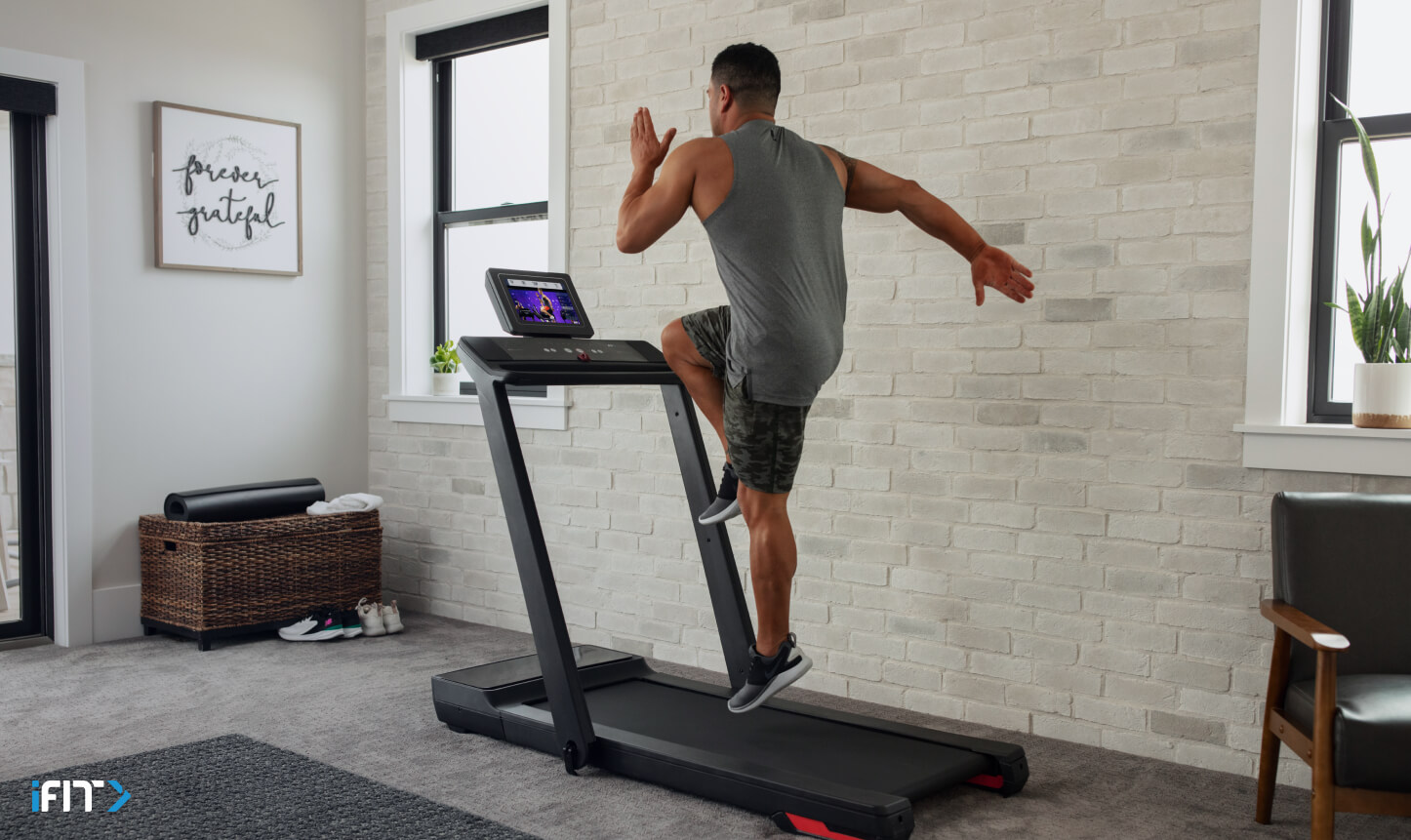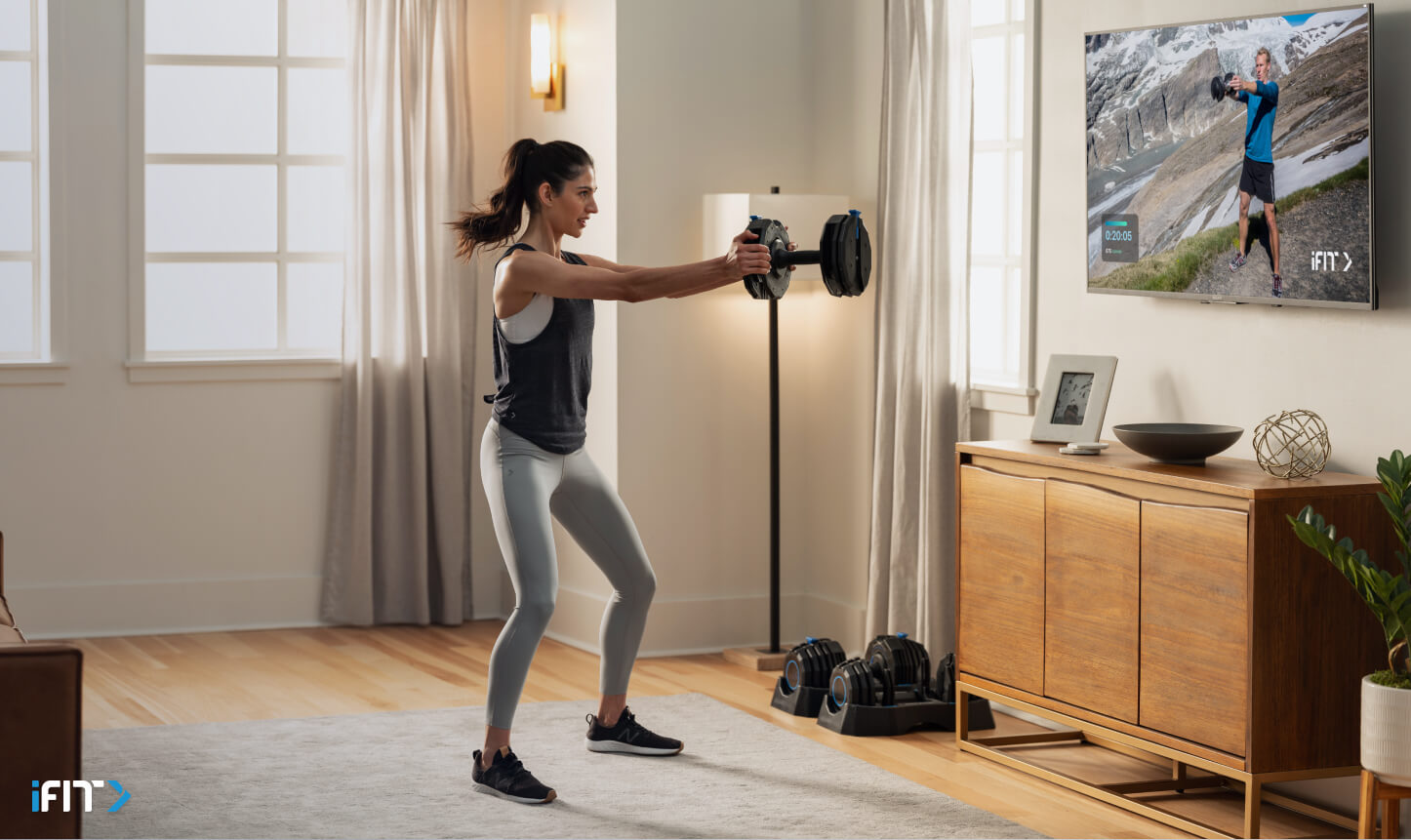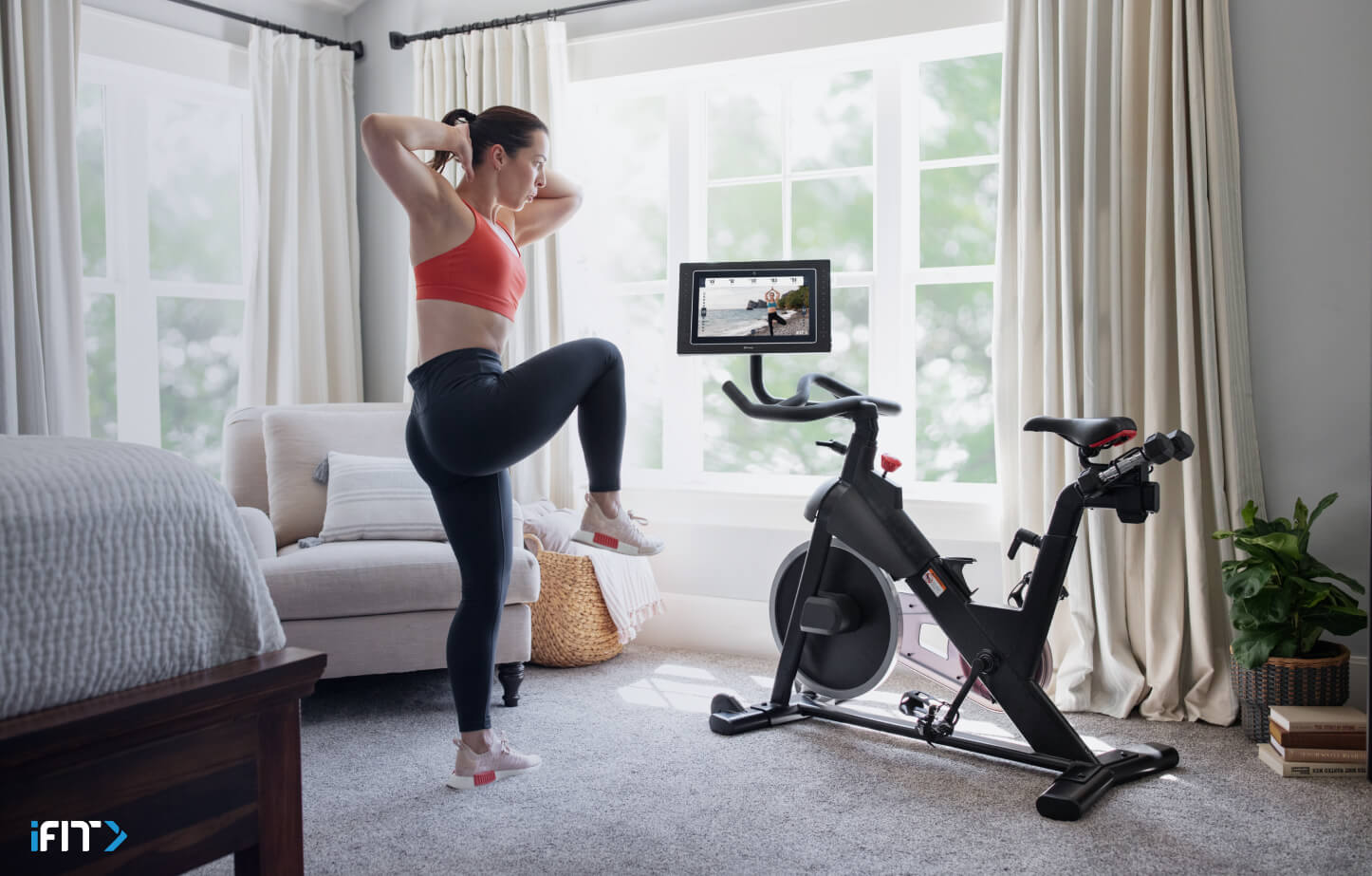
HIIT vs. Bootcamp Workouts: What's the Difference?
Swiping through workout classes and wondering what the difference between HIIT and bootcamp classes are? When you consider that HIIT stands for high-intensity interval training and bootcamp classes are sessions that work your whole body, you might be wondering: What’s the difference? Is one more complicated than the other? Is one more efficient?
To break it down, both are heart-rate-pumping workouts that are theoretically capable of burning calories more quickly than other types of workouts. Both focus on exercises that promote cardio, strength, and flexibility. The main difference? HIIT is a very orderly, formulaic exercise routine that alternates periods of activity with periods of rest for set ratios of time. In contrast, bootcamps follow less formal time structures. In a bootcamp, a sequence consists of something like 20 push-ups, 40 seconds of rest, then 30 seconds of planks. They can also include exercises that are less intense than traditional HIIT exercises.
Additionally, HIIT classes are generally solo workouts, or they can be one-on-one workouts completed with a personal trainer. In contrast, bootcamp classes are usually larger classes with a lot of participants.
Of course, that’s just the shortened version. To better distinguish between the two, we’ll highlight each method in more detail. Read on to learn more about HIIT and bootcamp classes. Plus, discover a comparison of the similarities and differences between the two.

What are HIIT workouts?
As mentioned above, HIIT is an acronym for high-intensity interval training. This means that high-effort exercises are done for short bursts of time (usually 20 to 30 seconds), followed by timed periods of rest. A good example is a jog with sprints mixed in.
To be considered high intensity, exercises are performed at 80 to 90 percent of your maximum heart rate. For reference, this means you will be breathing very hard and only able to speak in short phrases. Since HIIT workouts are so intense, they usually only last between 15 and 30 minutes. However, HIIT workouts can even be as short as 5 to 10 minutes. The iFIT Total-Body HIIT workout with Trainer Carmel Rodriguez in front of the Duomo in Florence, Italy, is an excellent example of a short but effective HIIT workout. It clocks in at just over seven minutes! Search for it in the iFIT app or, for something a little longer, try Ashley Paulson’s Bodyweight and Cardio Series.
HIIT exercises can be both cardio or strength based. Many HIIT routines integrate a mix of both. Cardio exercises can include sprinting, either on a treadmill or outside, as well as cycling. Strength training can consist of bodyweight exercises such as squats, push-ups, burpees, and inchworms. It’s also worth noting that intervals don’t need to be composed of traditional exercises. Your high-activity intervals can be jumping rope or even working out with a tool as low-tech as a broom!
The most effective HIIT exercises are often multi-joint moves. For example, burpees and push-ups are multi-joint moves as opposed to bench presses which are one-joint moves.
What are HIIT intervals?
HIIT intervals are probably their most defining feature. Their essential purpose is to allow you to do physically exhausting moves for a more extended period than you could normally do in one stint. The rest periods in between make it theoretically possible for you to do a sprint for three minutes.
The amount of time you do an exercise, partnered with the amount of time you rest, is known as a ratio—more specifically, work-to-rest ratios. When you're doing a HIIT workout, you can set work-to-rest ratios at any level that feels good to you. For instance, a beginner may want to take advantage of a 1:4 ratio. For a 10-second exercise stint, this would entail a rest period of 40 seconds. As you progress, you might want to increase to a 1:1 ratio, meaning you do a 10-second exercise burst and then rest for 10 seconds.
How many intervals you do back to back is also up to you. With longer work-to-rest ratios, you may want to do more intervals. With shorter work-to-rest ratios, you may want to go with a few less.

What are bootcamp classes?
As the name suggests, bootcamp classes are loosely based on the military training techniques used to break in new military recruits. These can include classic calisthenics like push-ups and jumping jacks, as well as more high-intensity aerobic movements. Generally, bootcamp classes are high energy and full of challenging exercises and sequences that train your entire body.
If that sounds similar to HIIT minus the intervals, you’d be right. Bootcamps are often confused with HIIT workouts because they’re very similar in intensity and share many of the same drill-like exercises.
Bootcamps are generally large classes headed up by a trainer or certified class instructor. Frequently, bootcamp instructors will assume a less-than-personable (i.e., sergeant-like) personality. This lends atmosphere and conjures energy and motivation. If it’s not your cup of tea, don’t feel alone—that’s kind of the point.
Compared to HIIT classes, bootcamp classes are traditionally large (while we’re on the military metaphors, some might say “army-like”) in size. Many classes include up to 30 or 40 participants. For many, part of bootcamps’ appeal is the group atmosphere. The group atmosphere can foster a sense of community and energy that ultimately drives motivation.
Who should do bootcamp classes?
Bootcamp classes are suitable for many purposes, but they’re especially ideal for those who want to work out every muscle group but don’t necessarily have the motivation to power through alone. Also, since bootcamps are led by a trainer and include many participants, they incentivize following along and giving your all.
They’re also suitable for those who quickly tire of set routines and want to mix a lot of variety into their workouts. Bootcamp exercises are fairly easily diversified because they aim to give you a good workout. They don’t necessarily have acute targets, such as putting your heart rate in 80 to 90 percent of your maximum range for a certain number of minutes. While many of them do, this isn’t a requirement. This allows the instructor to have more freedom to shape their classes however they’d like and integrate various exercises.

What are the differences between bootcamp workouts and HIIT workouts?
In truth, HIIT classes and bootcamp classes have a lot more similarities than differences. Perhaps the most significant difference is that since bootcamp classes don’t require a work-to-rest ratio, they can incorporate a more flexible structure. Think of bootcamp as a song, while HIIT is a chorus played over and over again.
For example, suppose you're doing a bootcamp workout. In that case, you can do warm-up exercises at a low-effort pace, followed by jumping rope for 20 seconds, followed by 15 burpees, followed by a run around the perimeter of the training grounds.
In contrast, HIIT workouts are more orderly in their structure. For example, when you're doing a HIIT workout, you might do three sets of 20-seconds mountain climbers with 10 seconds of rest. Then, you could follow it up with three sets of 20-seconds push-ups with 10 seconds of rest. Fun fact: This routine follows a super-specific form of HIIT known as Tabata!
This also might be an apt place to mention that bootcamp workouts are often longer than HIIT workouts. Since rest periods can be extended and not every exercise needs to be performed at maximum effort, many bootcamp classes clock in at an hour. At the same time, 15-minute HIIT workouts are perfectly acceptable. It’s worth noting that shorter doesn’t necessarily mean easier.
With all this in mind, bootcamp exercises might be the better choice for someone who is looking for a less-intense workout. On the other hand, for anyone hesitant about the idea of a tough-talking personal trainer calling the shots (or doesn’t like not knowing what to expect), HIIT exercises may be a better fit.
Can bootcamps workouts integrate HIIT?
Yes, bootcamp workouts can (and many do) integrate HIIT! Since most mix periods of vigorous activity with short rest breaks, they essentially include high-intensity interval training. However, HIIT exercises will generally be just a tiny portion of the class. A bootcamp personal trainer may have you do 10 seconds of sprints followed by 10 seconds of rest, then repeat that three times. By definition, that’s a HIIT workout. However, they likely won’t structure the entire class that way, merely because the sheer intense nature of HIIT doesn’t lend itself well to an hour-long class that includes individuals of varying fitness levels.
What are the similarities between HIIT classes and bootcamp classes?
If you're reading this article because you're trying to make the call between a bootcamp class and a HIIT class, you’ll love hearing that these two forms of exercise have a lot more in common than not. Ahead, we outline how bootcamps and HIIT classes will offer a win either way.

1. Neither is steady-state exercise
Steady-state exercises are exercises that you perform at one pace for the duration of a workout. This can include, for example, walking on a treadmill at one consistent speed. In contrast, non-steady-state workouts spike your heart rate intermittently. Both HIIT and bootcamp exercises are non-steady-state workouts. Non-steady-state workouts can improve your fitness level, build endurance, and can also aid with weight loss.
2. Both require rest in between workouts
In contrast to yoga or pilates, bootcamp and HIIT classes will really work your body. For that reason, trainers recommend that you don't do bootcamps or HIIT workouts every day. You should take bootcamp classes about once a week and definitely not more than twice a week, with at least two days off in between them. Similarly, you should engage in no more than a few 30–45-minute HIIT workouts each week, allowing 48 hours of rest between each workout. Remember: High-intensity, non-steady-state workouts will put stress on your body. It’s up to you to ensure that you don’t overdo it.
iFIT bootcamp and HIIT workouts
iFIT’s ever-expanding Library of high-intensity, non-steady-state workouts makes it easy to find a HIIT or bootcamp workout that’s just right for you. Want an epic view while you build lean muscle? Join iFIT Trainer Hannah Eden in Stykkishólmur, a small fishing village located in the western part of Iceland, for a 30-minute, bodyweight-based HIIT class that will invigorate your body and your soul. Want an even more dramatic backdrop? Team up with Hannah for HIIT strength workouts at Iceland’s Seljalandsfoss waterfall or Jökulsárlón Glacier Lagoon.
If bootcamp feels more your speed, join former pro football player and iFIT Trainer Tiki Barber for a hard-hitting, speed-and-strength-oriented bootcamp workout. It clocks in at just under 18 minutes, making it the perfect routine for those in need of a quick but impactful workout. Those with more time to spare should check out iFIT Trainer Anja Garcia’s Total-Body Bootcamp Series.
DISCLAIMER: This blog post is not intended to replace the advice of a medical professional. The above information should not be used to diagnose, treat, or prevent any disease or medical condition. Please consult your doctor before making any changes to your diet, sleep methods, daily activity, or fitness routine. iFIT assumes no responsibility for any personal injury or damage sustained by any recommendations, opinions, or advice given in this article. Always follow the safety precautions included in the owner’s manual of your fitness equipment.
You might also like

Introducing inMotion: A New Way to Explore with Motion, Music, and Mindfulness
New York City is one of the most photographed, written-about, and traveled destinations in the world. With inMotion: New York City, you have access to an immersive, trainerless experience designed to connect body, mind, and place through three unique ways of moving through this iconic city: Discover, Rhythm, and Breathe.Europe’s Christmas markets are some of the most magical and historic destinations in the world, and with inMotion: Christmas Markets, you now have a new way to experience the season’s charm across Vienna, Budapest, and Cologne. Like all inMotion experiences, this series is immersive and trainerless, designed to connect body, mind, and place through three unique ways of moving: Discover, Rhythm, and BreatheInstead of following a trainer, you’ll choose a location, then decide how you want to experience it. Each area can be experienced in three different ways:Discover: A guided tour, perfect for days when you want to learn while you move.Rhythm: Music-driven movement, ideal when you want movement and momentum.Breathe: Guided meditation, for moments when you need clarity and reflection.This structure allows you to return to the same destination with a completely different focus each time, turning each location into a unique experience.How it works Each destination is captured through three audio experiences. You can choose the style that matches your intention for the day.Want to learn? Choose Discover and explore the stories of your destination, its history, and uncover hidden details as you move.Need to feel energized? Choose Rhythm, where a curated playlist will drive your pace and help you connect to the pulse of the experience.Prefer to reset? Choose Breathe and experience a guided meditation supported by the beauty of your surroundings.Why it’s different This new format makes each destination more than scenery: it becomes an immersive experience that you can return to based on your goals and mood. In all, it gives you nine distinct ways to move with purpose.inMotion: New York City and inMotion: Christmas Markets help you connect with the city and yourself, one step at a time.Try inMotion: New York City on TreadmillTry inMotion: New York City on BikeTry inMotion: Christmas Markets on TreadmillTry inMotion: Christmas Markets on BikeDisclaimer: The primary purpose of this blog post is to inform and entertain. Nothing on the post constitutes or is intended to be a substitute for professional medical advice, prevention, diagnosis, or treatment. Reliance on any information provided on the blog is solely at your own risk. Always seek the advice of your physician or other qualified health provider with any questions you may have regarding a medical condition, and please consult your doctor or other health care provider before making any changes to your diet, sleep methods, daily activity, or fitness routine. Do not disregard professional medical advice or delay seeking it because of information available on this blog. NordicTrack assumes no responsibility for any personal injury or damage sustained by any recommendations, opinions, or advice given in this article. Always follow the safety precautions included in the owner’s manual of your fitness equipment.
November 24, 2025

BenefitHub
Access exclusive pricing to iFIT’s top brands, only available through your BenefitHub program.
September 19, 2020

Beneplace
Access exclusive pricing to iFIT’s top brands, only available through your Beneplace perks program.
September 19, 2020